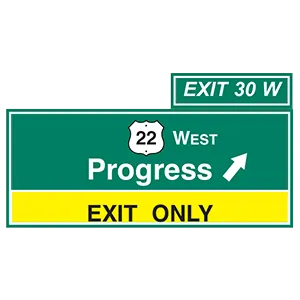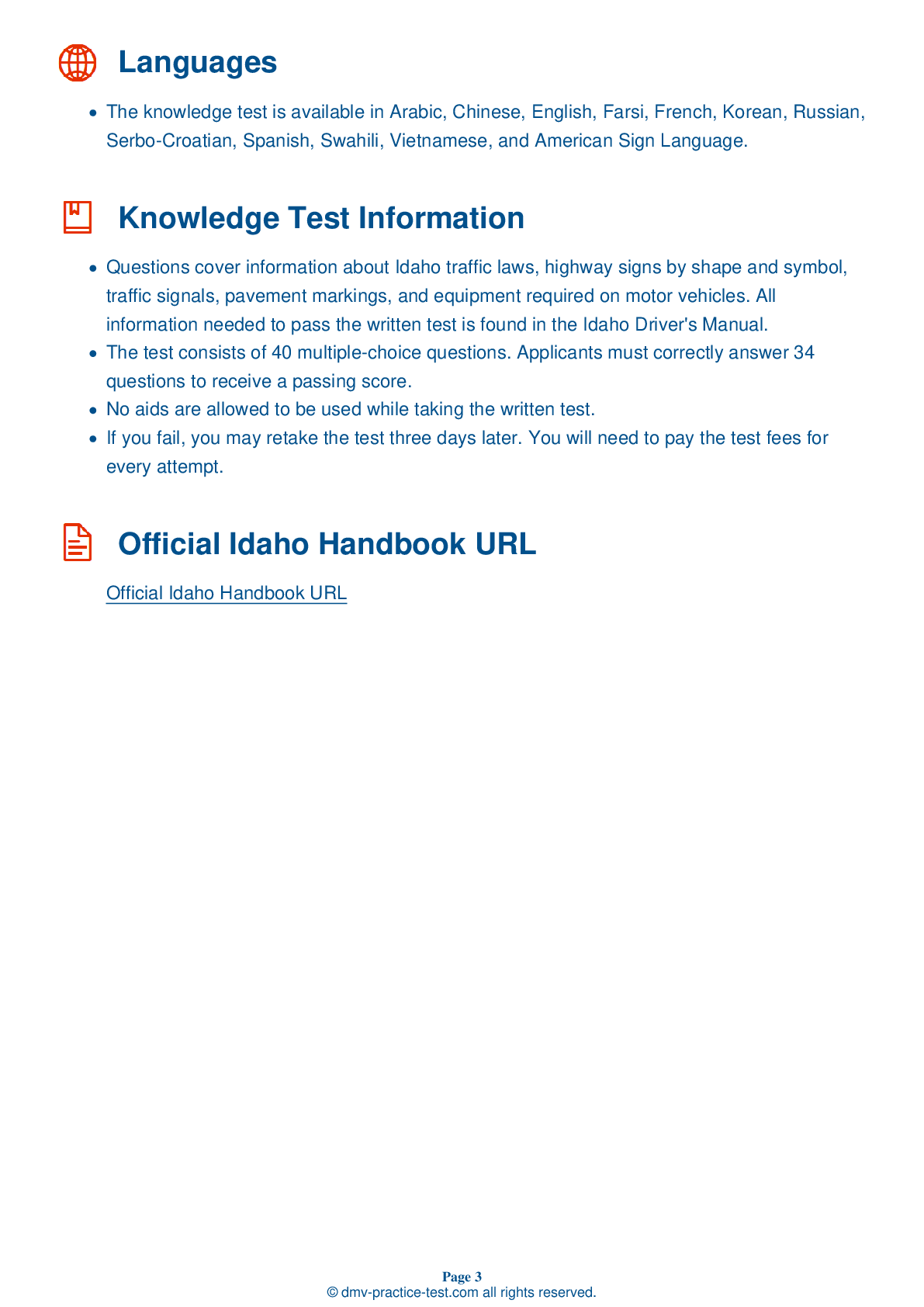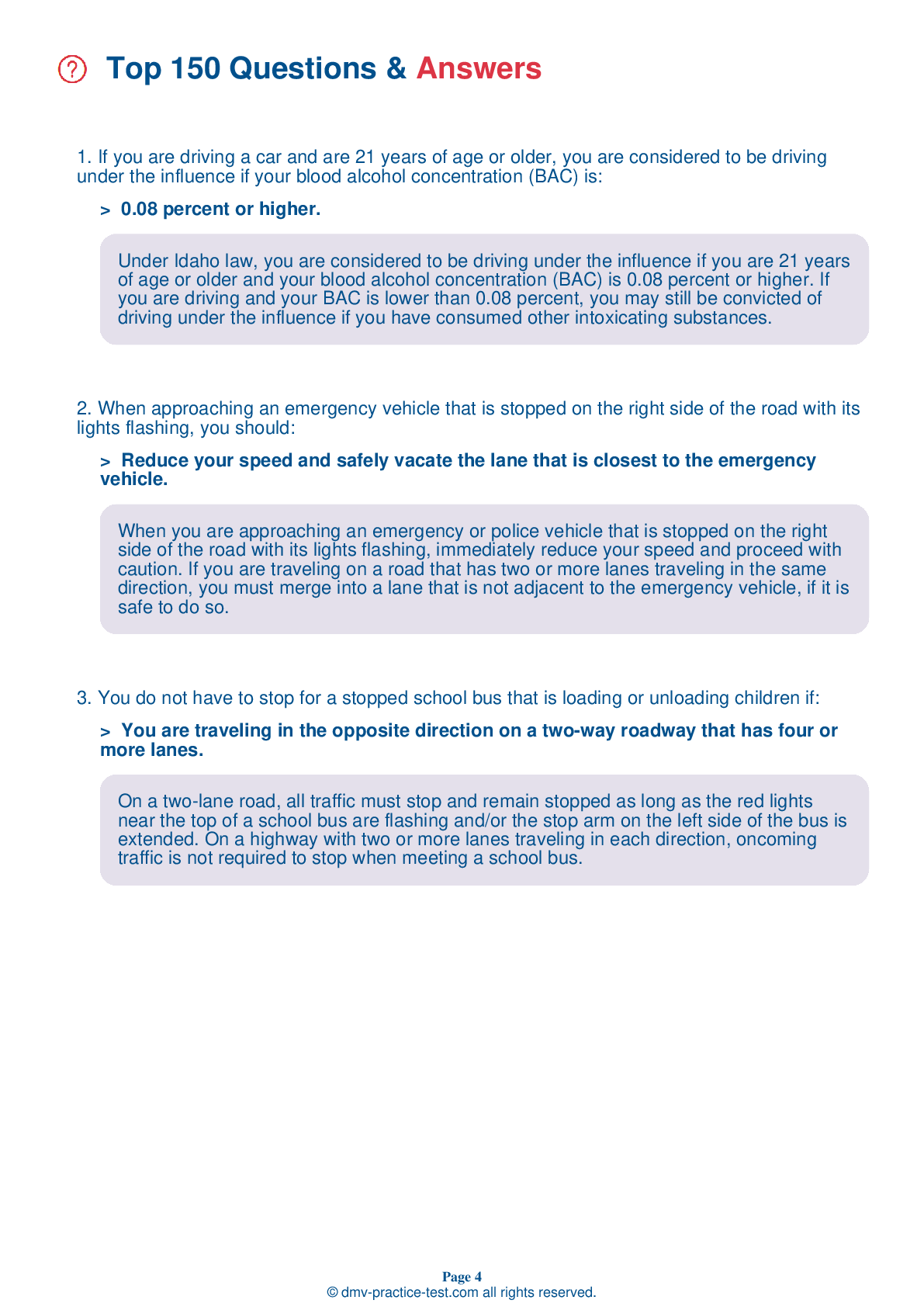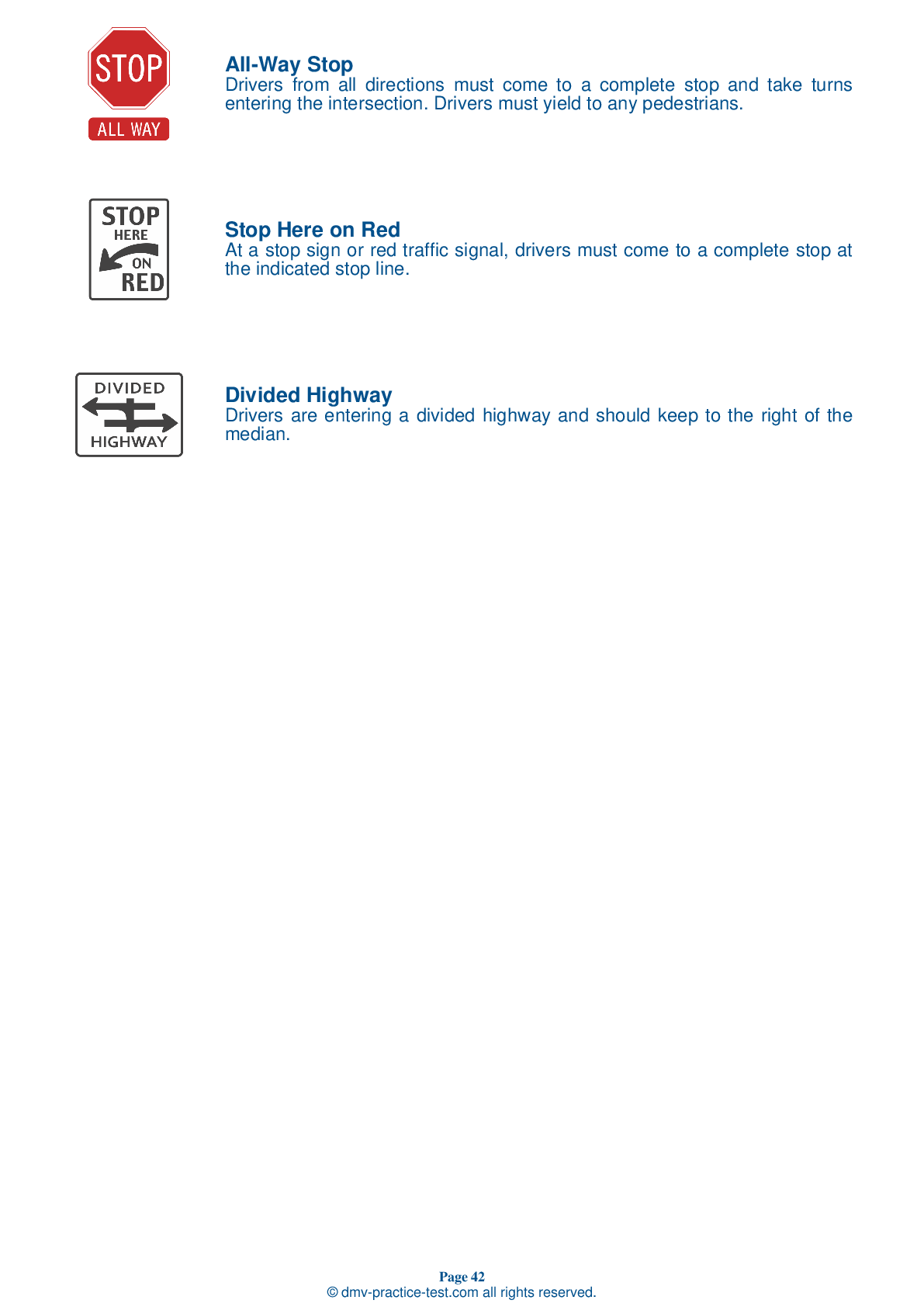FREE Idaho DMV Practice Test #24 Page 2 of 5
This set of Idaho DMV practise tests has been updated for January 2025. It includes questions based on the Idaho Driver Handbook's most significant traffic signs and regulations for 2025. Use actual questions that are very similar (often identical!) to the DMV driving permit test and driver's licence exam to study for the DMV driving permit test and driver's licence exam.
On the practise exam, each question gets a tip and explanation to help you remember the concepts. The written component of the official DMV test will include questions about traffic rules, traffic signs, and driving statutes, as well as information from the Driver Handbook.
To obtain a passing grade, you must correctly answer 34 of the 40 questions. Take our DMV practise exam to help you prepare for your Idaho instruction permit or driver's licence.
The DMV exam is available in several languages.
Using any kind of testing assistance will result in an automatic fail, and the DMV may take additional action against your driver's licence, so stay away from it.
9 . Consuming which of the following substances may impair your ability to drive safely and may result in an arrest for driving under the influence of intoxicants (DUII)?
A wide variety of intoxicants can impair your ability to drive. These include all types of alcoholic beverages, illegal drugs, inhalants, and many legal medications (both prescription and over-the-counter).
10 . If an aggressive driver cuts you off, you should:
If an aggressive driver cuts you off on the roadway, stay calm and get out of their way. Trying to get even with an aggressive driver risks escalating the situation and increasing the danger.
11 . You come to an intersection that is blocked by other traffic. You should:
You cannot enter an intersection if traffic is backed up on the other side and you cannot get completely through the intersection. Wait until traffic ahead clears so you do not block the intersection.
12 . When turning left, drivers must yield the right-of-way to:
When turning left, drivers must yield the right-of-way to oncoming traffic. Drivers must also always yield the right-of-way to pedestrians, bicyclists, and other drivers who are already in the intersection.
13 . If two drivers arrive at the same time to a four-way intersection controlled by stop signs:
Yield the right-of-way to the driver on your right at a four-way intersection if you both arrive to the intersection at the same time. You may then proceed when it is safe to do so.
14 . Increase your following distance when:
You should increase your following distance when you are behind a large vehicle that blocks your vision, when driving in bad weather or heavy traffic, when exiting an expressway, when behind a motorcycle or bicycle, and if someone is tailgating you.
15 . When parking uphill next to a curb, set the parking brake and:
When parking facing uphill on a street that has a curb, set your parking brake and turn your steering wheel away from the curb. This way, if your vehicle starts to roll, it will roll into the curb.
16 . If you see this sign above your lane, you:




